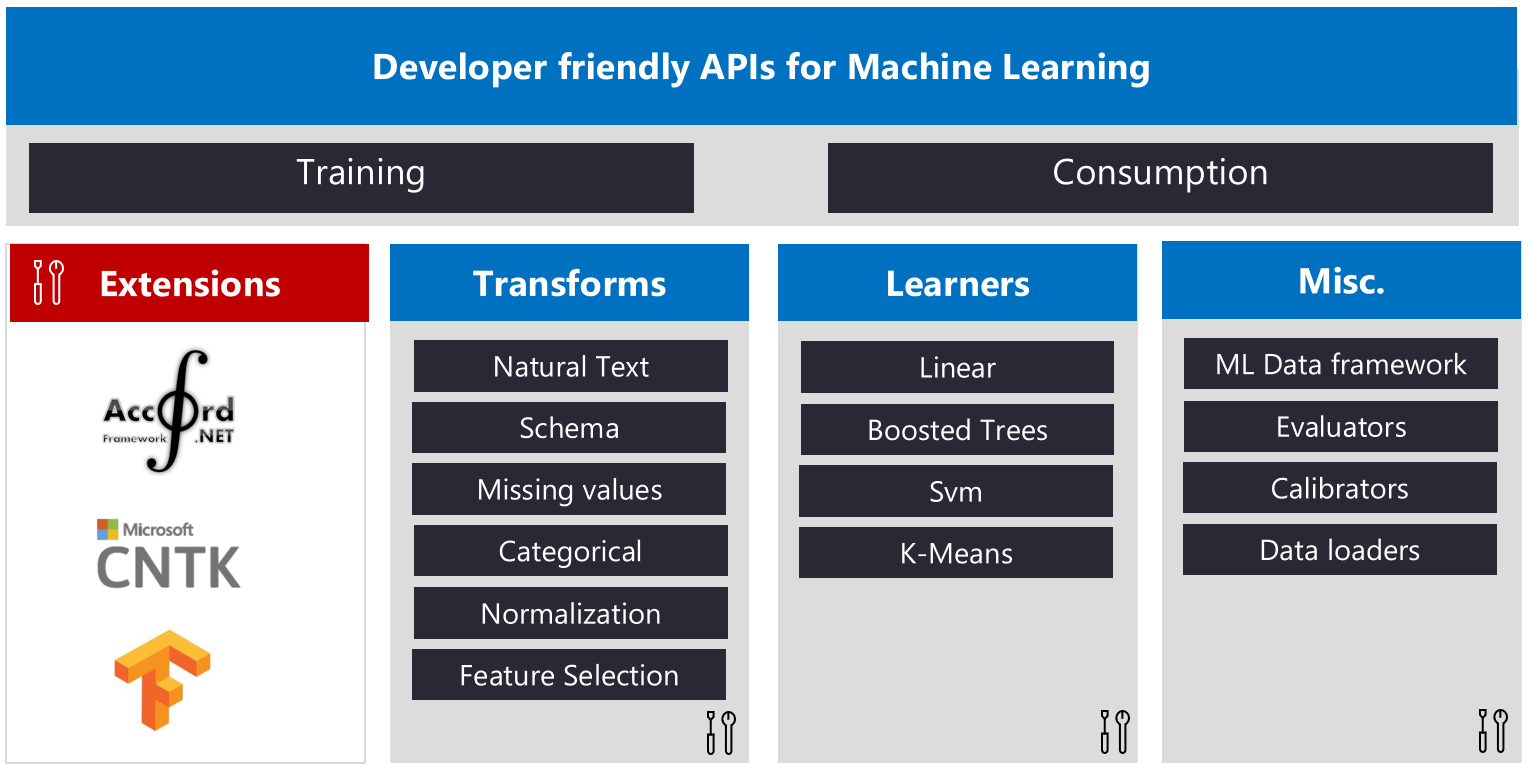Starting as an internal tool, it gradually evolved into a larger framework with over a decade. Today, Microsoft uses it in Windows, Bing, and Azure, and it’s now available to everyone in preview. ML.NET lets .NET developers create their own models and infuse custom machine learning without hassle. They don’t need to be an expert in the field or have any prior experience. It simplifies the process and supports a couple of tasks already. Classification enables tasks like text categorization and sentiment analysis, while regression can help with forecasting and price prediction. It also comes with an early draft of .NET APIs for training models, predictions, learning algorithms, transforms, and more.
Democratizing AI
ML.NET can be adapted later to support TensorFlow, Accord.NET, and CNTK. There are also plans to support recommendation systems, anomaly detection, deep learning, and more. That deep learning support would include popular libraries like Caffe2, CNTK, TensorFlow, and more. In general, the tool highlights Microsoft’s wish to democratize AI. As the capabilities of machine learning and AI expand, CEO Satya Nadella has emphasized the need for everyone to have access. Without tools like this, there’s the risk that as the industry develops only a handful of powerful companies will be players. The ML.NET plans to add to that philosophy by further simplifying the GUI, increasing functionality, and taking contributions from other developers. You can view all the relevant documentation on GitHub as well as a source code download.





